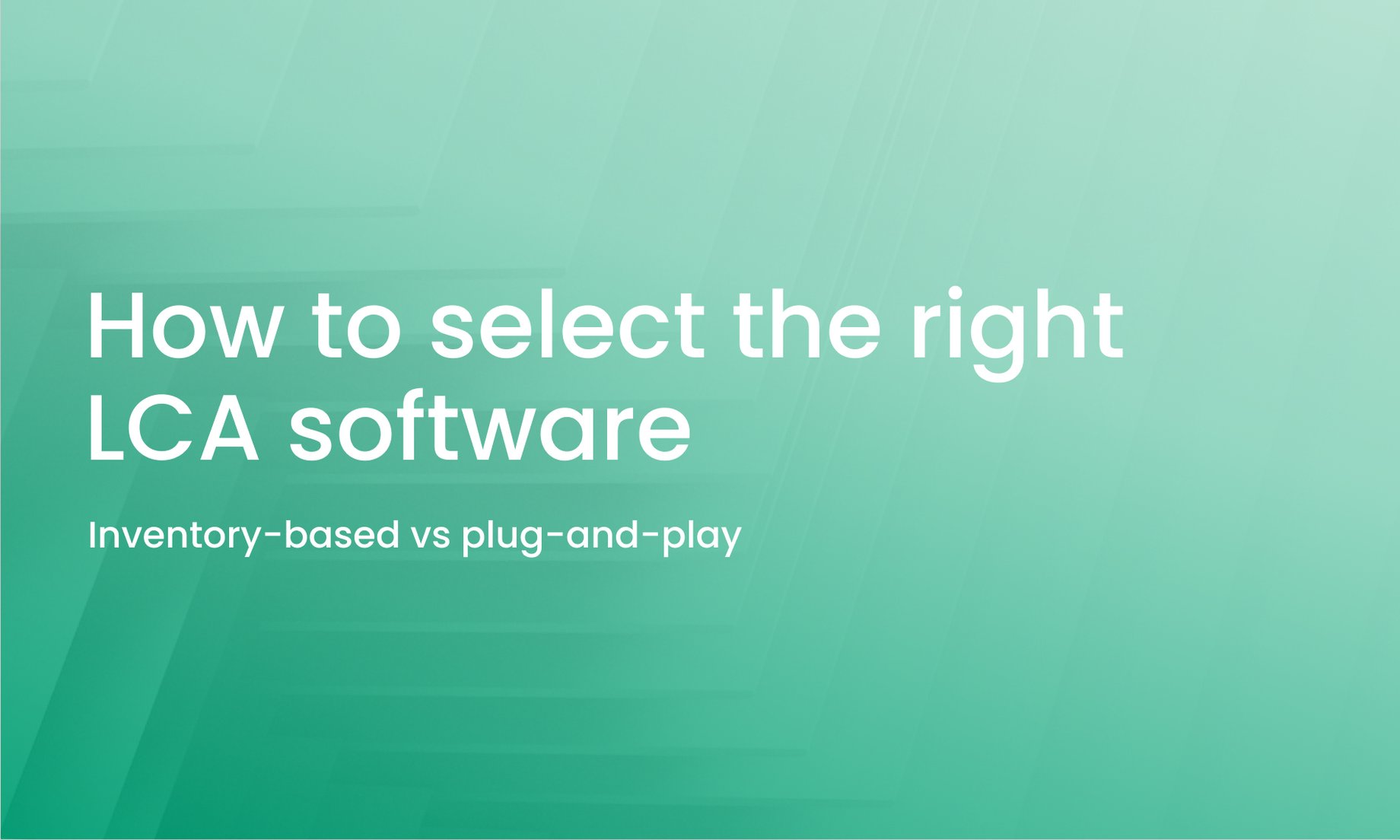LCA software comes in two main types: Life-cycle inventory-based tools, often used by LCA practitioners, and easier-to-use plug-and-play tools, often used by designers and project or product managers. Each serves different needs, from research to reporting. Read the article to learn more.

Inventory-based LCA software: go deep
Life-cycle inventories provide a detailed, structured listing of all inputs and outputs of a product, process, or system. These include resources extracted from nature, products, co-products, waste, and emissions to air, water, and soil. Inventories are typically represented as tree diagrams and serve as the background datasets for life-cycle assessments (LCA). There are two main levels of life-cycle inventories:- Unit-process-based: the smallest unit of a production system for which inputs and outputs are quantified. This approach allows LCA practitioners to examine and edit inventories in detail. For example, contributors to a steel milling process can be reviewed and adjusted to match the specific conditions of a given plant.
- System-process based: an aggregated dataset for one or several processes, represented as a “black box” with no upstream visibility. While edits are possible, they are more difficult, as the underlying composition is not disclosed. Any modifications are therefore only estimates.
The most common commercial inventory-based tools are SimaPro and Sphera LCA for Experts. Of these, SimaPro provides all data as unit processes, and Sphera provides part of its data as system processes.
Plug-and-play LCA software: go fast
Plug-and-play LCA software refers to tools where pre-packaged life-cycle assessment methods and data are provided as emission factors, at least for part of the datasets. These tools typically combine generic background LCA data with supplier-specific data.
Because data can be offered as emission factors, such tools can incorporate supplier-specific information and other data where full inventories cannot be disclosed due to commercial confidentiality. Some also apply different characterization factors, segmenting their databases by data properties and intended use to guide users.
Plug-and-play software includes one or more LCA methods or modules, which capture methodological choices. Since these differ across industries, most plug-and-play tools are designed for specific sectors or groups of industries. In some cases, models are locked for compliance purposes and paired with reporting features.
One Click LCA is an example of commercial plug-and-play LCA software.
Typical applications for LCA software
The applications of LCA software vary, but several applications stand out:- Understand environmental impacts and identify hotspots
- Find and compare sustainable products and suppliers
- Create and assess alternative designs
- Provide data for compliance and customer requirements
- Visualize LCA results for business users
- Model LCAs for any required scope
- Evaluate the methodological basis of LCA results
- Develop standard LCA templates for organizational use
- Produce LCAs at scale
Other use cases include benchmarking against competitors and applying LCA-based benchmarking across a product portfolio, but these are outside the scope of this article.
Key differences between inventory-based and plug-and-play LCA software
Below are some of the key differences between these types of LCA software.

When to use inventory-based vs plug-and-play LCA software
Each type of LCA tool is suited to different applications:
- Plug-and-play software is typically better for compliance and reporting, as well as scaling LCA within defined frameworks or existing standards.
- Inventory-based software is better for detailed design, analysis, and innovation, offering full transparency at every level of the assessment.
Using the right tool for the task — and, where necessary, combining both approaches — allows you to capture the benefits of each. The graphic below shows the differences between the tools and their main applications.

In practice, inventory-based LCA tools are most often used by LCA practitioners, researchers, and innovation teams. Businesses, however, usually adopt plug-and-play software for compliance, reporting, and scaling LCA use.
Getting started with LCA software
For those new to LCA, plug-and-play tools often provide an easier starting point. One Click LCA is a plug-and-play software for the manufacturing and construction sectors, and the One Click LCA Academy offers a range of free training resources to help you get started.
For other industries, inventory-based software such as SimaPro may be more suitable, with training available both online and in person.
One Click LCA: Explore AI-powered LCA software with global data and integrations.
Carbon Experts Newsletter
Industry news & insights — straight to your inbox
Resources
Keen to read more?
Read more about the topic
Asha Ramachandran • Feb 07 2025
Melina Zacharia • Apr 11 2025
Aileen Carroll • Aug 07 2023
Asha Ramachandran • Sep 01 2023
